How an exhibit of Mi'kmaw handwoven baskets connects to climate change
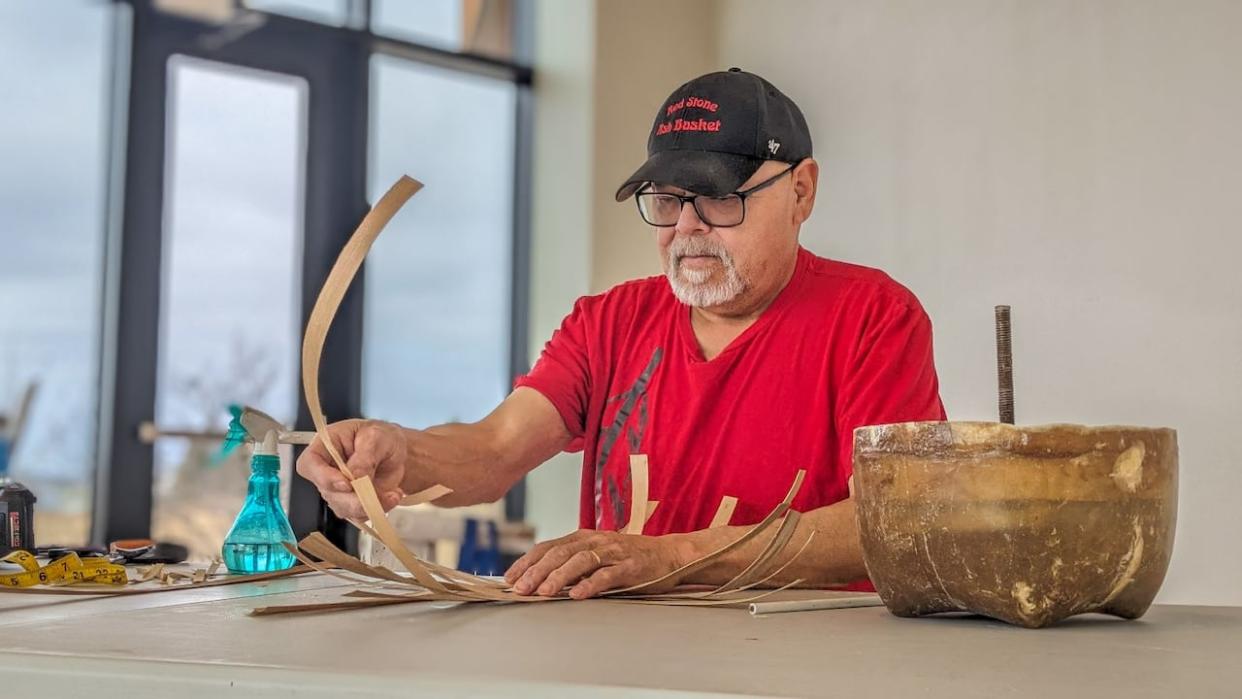
A Mi'kmaw elder weaving handmade baskets is the latest climate artist-in-residence at the Canadian Centre for Climate Change and Adaptation in St. Peter's Bay, P.E.I.
Francis Jadis has been making baskets since his childhood on Lennox Island.
Now his baskets — made of wisqoq, or black ash — are the focus of an exhibit called Wisqoq, The Basket Tree, on display until May 7.
"I think a basket is a great metaphor for climate change and adaptation because it's been harvested for millennia by Mi'kmaq for basket-weaving, canoe-making and many more things," said Alexis Bulman, curator of the basket exhibit and artistic director at the centre.
"But the tree itself — the black ash — its population is diminishing on this island because of climate change stressors. And so not only is that black ash tree at risk here, but then so is the tradition that's connected to it."
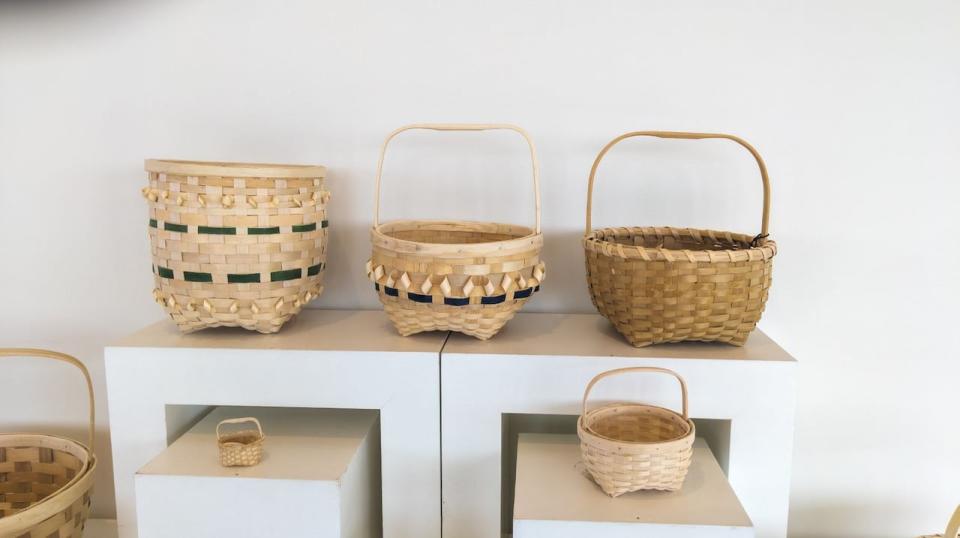
The exhibition is always changing, because Francis Jadis is at the gallery on Fridays weaving baskets, which are then added to the display. (Shane Hennessey/CBC )
For someone like Jadis, the reduced number of black ash trees means travelling further to find the materials that keep the basket-weaving tradition alive for future generations, Bulman said.
"The basket has everything to do with climate change and adaptation," she said, "because we're seeing the effects of it in real-time."
The exhibition includes photos of Jadis and his family, as well as a basket woven decades ago by his parents.
Including those artifacts shows that basket-weaving is a shared piece of tradition and culture, Bulman said.
"It conveys a family, a community," she said. "Because basket-weaving isn't something that is just done by one person."
Endangered tree
During the exhibit's run, Jadis will travel to the climate centre on Fridays from his home on Abegweit First Nation in Scotchfort, P.E.I. Any baskets that he creates are added to the display.
Jadis said he started helping his parents when he was about six or seven. His jobs were to clean the floor, take shavings to the burn pile and help his father get wood.
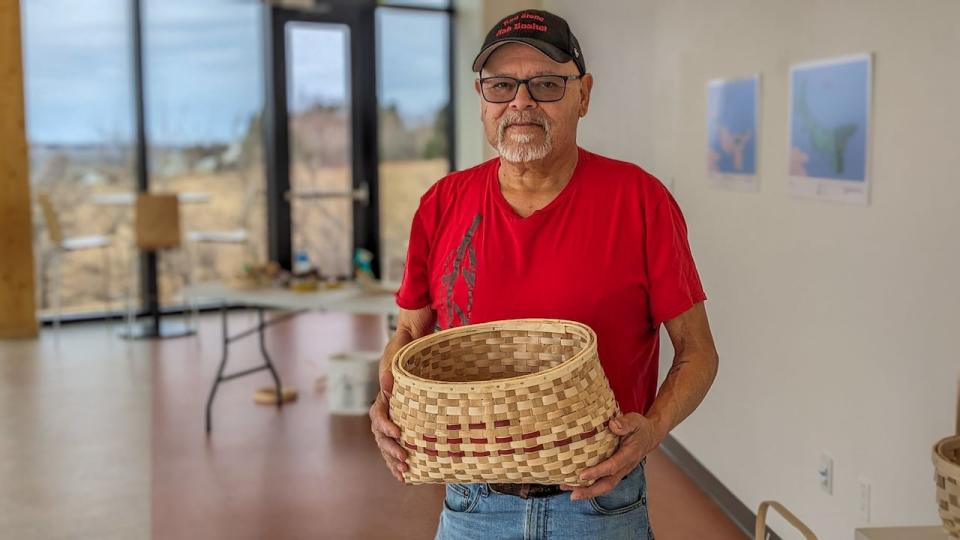
Jadis has been making baskets since his childhood on Lennox Island, where he used to clean up the wood shavings and help his father get wood. (Shane Hennessey/CBC )
Today, Jadis travels to New Brunswick and northern Maine in search of wisqoq for his baskets. He said he has friends with farms who allow him to harvest the black ash along their fields.
In 2019, he brought back 3,000 to 4,000 seedlings from Maine and gave them to the provincial nursery at Upton, which started growing them.
Jadis took 35 of the wisqoq to plant, and the rest went across the Island.
"I know we used to have ash here on the Island at one time, and it's about time somebody brought them back," Jadis said.
"The black ash seedling, they grow every seven years so 2019 was the year that they were growing, so 2026 is the next time I'll be heading over."
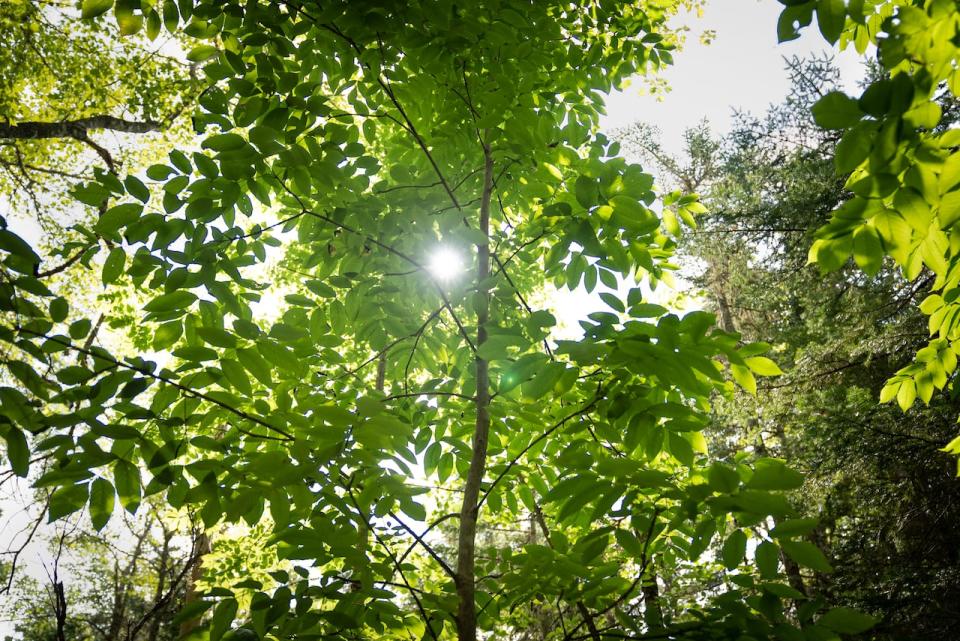
There have been projects mapping the remaining black ash trees across Prince Edward Island, including this one in Dromore, P.E.I. (Shane Hennessey/CBC )
Jadis said he's worried about changing weather patterns that have encouraged the spread of the emerald ash borer.
"They're killing off the trees and the ash trees, especially in Ontario and Quebec, and they're heading this way," Jadis said.
"They're not on the Island," he said, then added, "Probably just don't have enough money to get across the bridge."
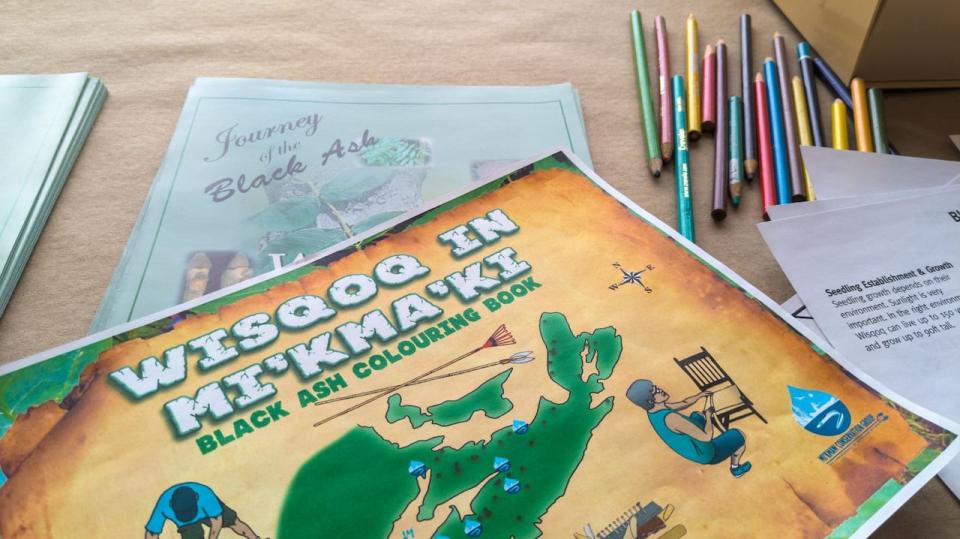
There are also educational activities for kids about wisqoq, including a colouring book and a scavenger hunt. (Shane Hennessey/CBC )
Jadis said he keeps an eye out for the deadly pest on the wisqoq.
"We want to take care, take care of the Island, I'm trying my best," Jadis said.
"I teach a lot of youth and elders how to make baskets. Now they're getting back into it, and I hope they just keep it up."
Making the connection
Bulman said many Islanders have hand-woven baskets in their homes, and she hopes seeing the baskets being woven in person will help visitors to the exhibit make the connection to climate change.
She also hopes it will spark questions among visitors about what they can do to be stewards of the environment so that the black ash tree can flourish.
There's a peace in watching someone who's so skilled weave a basket, and all of the the knowledge that process holds.
—Alexis Bulman, curator
"I believe wholeheartedly that art can make a difference in helping communities heal from climate grief," Bulman said.
"There's a peace in watching someone who's so skilled weave a basket and all of the the knowledge that process holds. And I think it can give you hope."
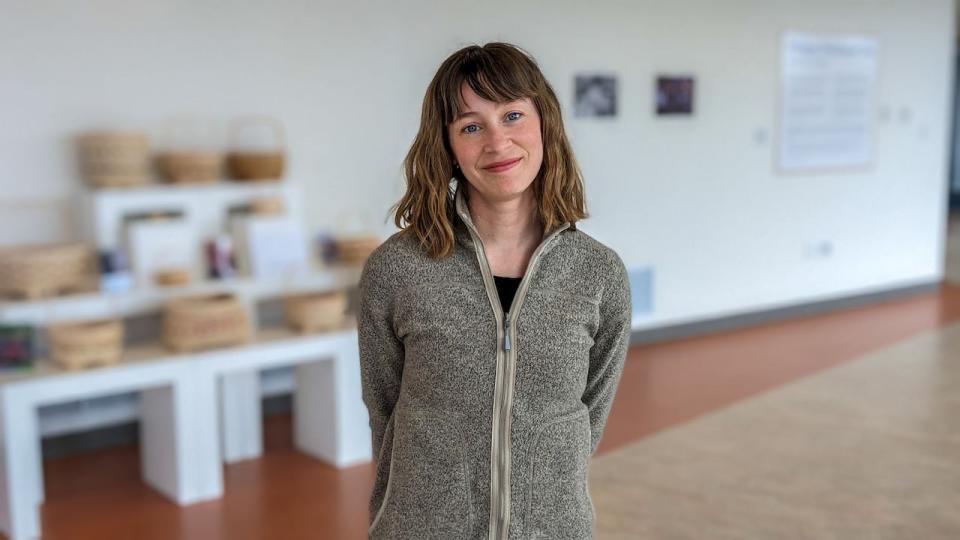
Exhibit curator Alexis Bulman says many Islanders, including her parents and her grandmother, have a woven potato basket in their homes. She hopes that will add a personal connection to the exhibition. (Shane Hennessey/CBC )
About the exhibit
Wisqoq, The Basket Tree includes many local resources that have been created about the wisqoq on P.E.I., including projects that are mapping, planting and monitoring black ash. There are also educational activities for kids, including a colouring book and a scavenger hunt.
It is presented by Creative P.E.I., with Indigenous P.E.I. as a community partner and financial support from the province's Climate Challenge Fund.
Island schools can book field trips from April 22-26 to visit the exhibition and take part in related workshops.
The art gallery is open to the public every Friday from 9:30 a.m. to 4 p.m..
Admission is free.

